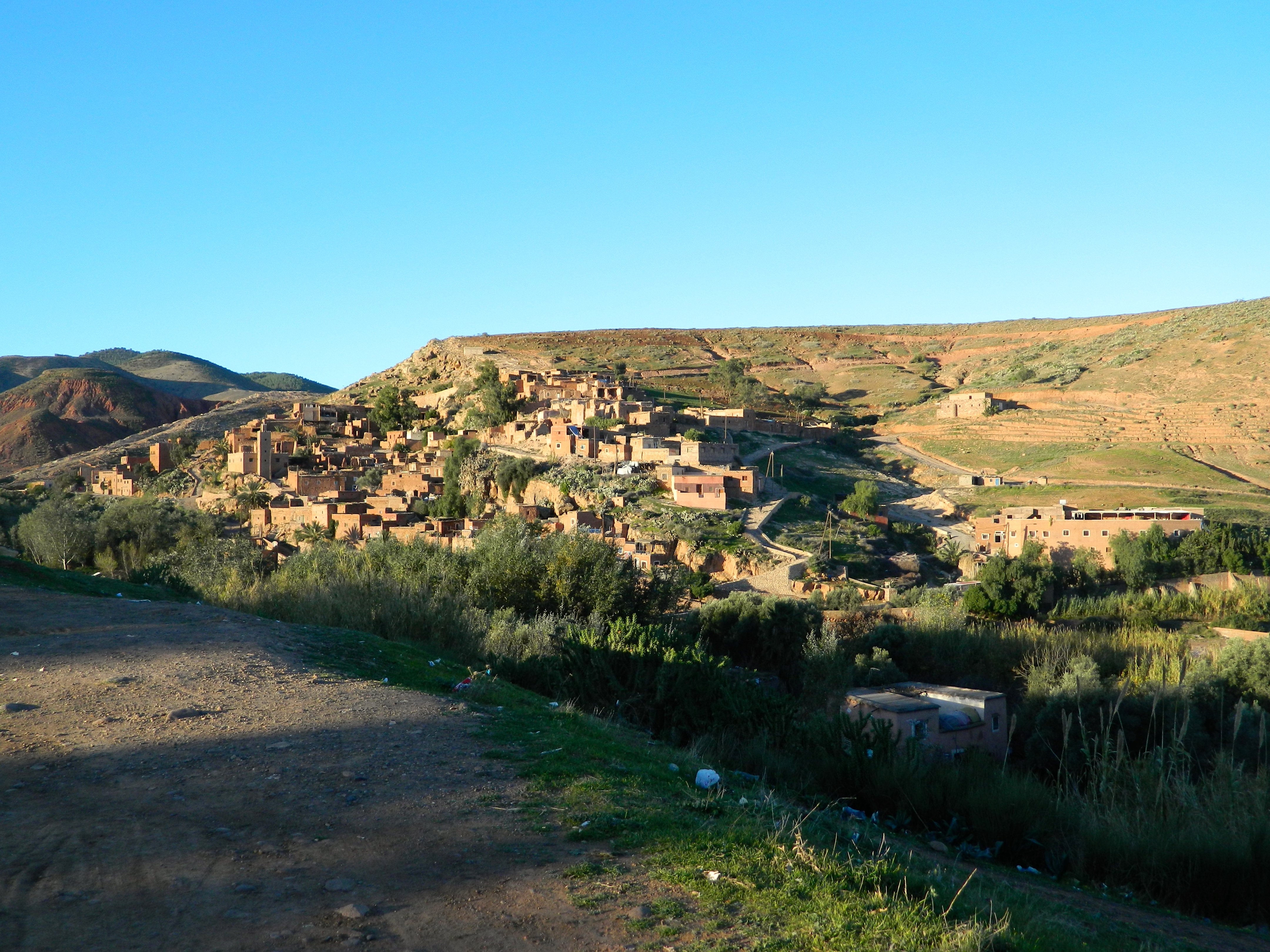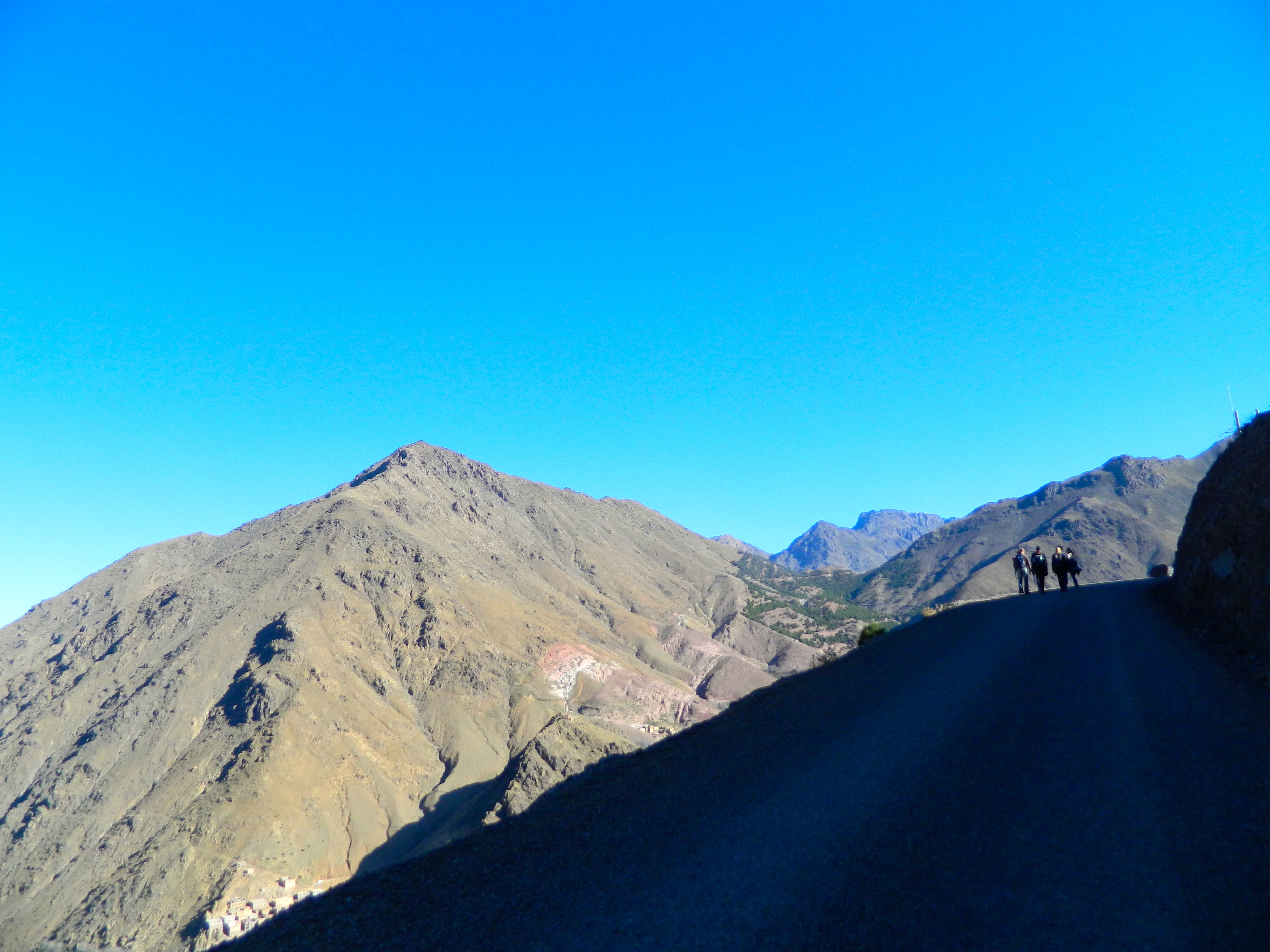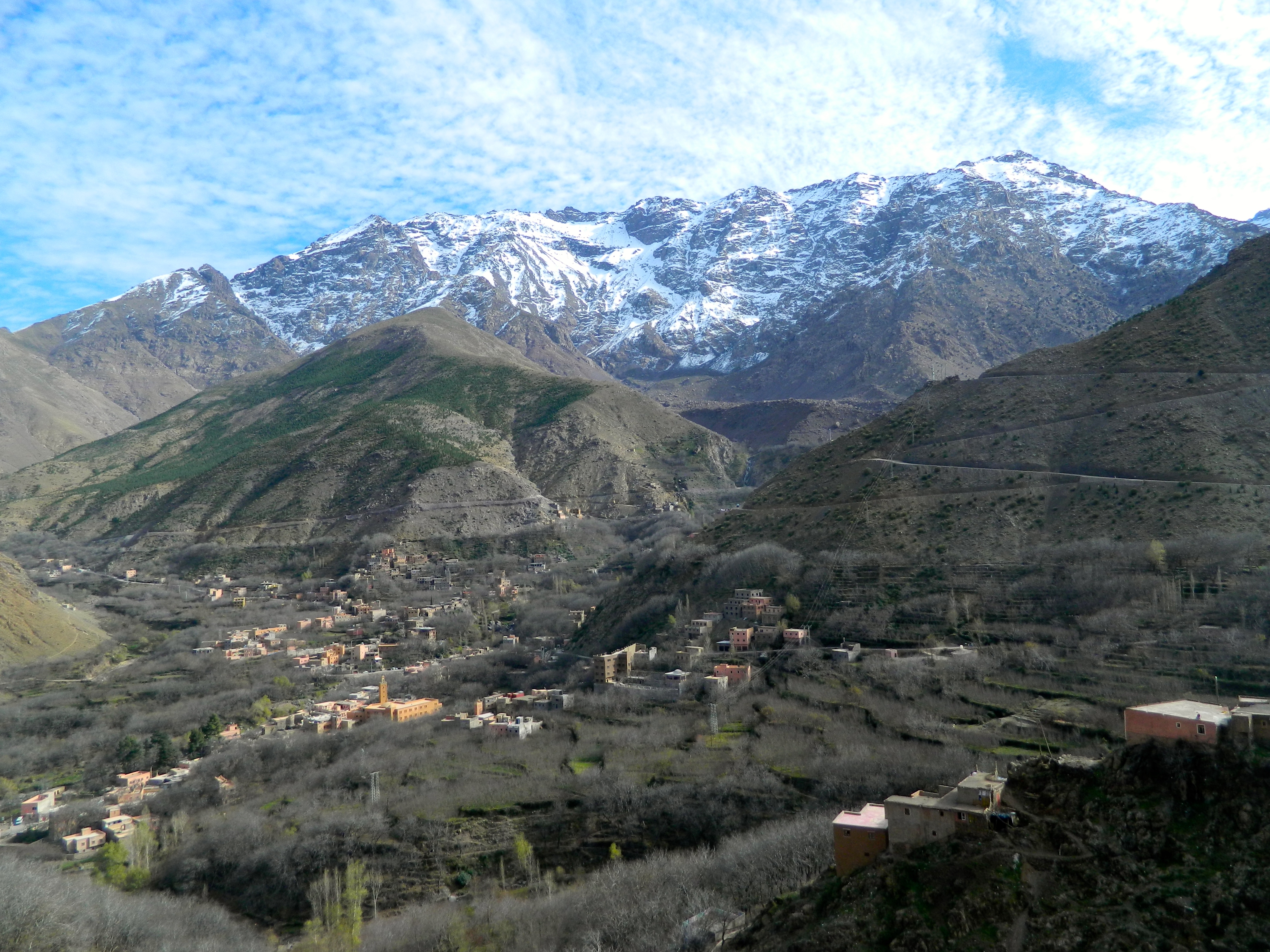Located an hour or so outside of Marrakech, Imlil is a popular destination for adventurous tourists in the region.

(Photo credits by PintsizedPioneer)
Unfortunately, recently, there were two murders in the area possibly linked to the Islamic State. Two Scandinavian women who were camping there were murdered right before my family and I came to the area. The event rocked Moroccan and northern European news outlets as a result of it being a bout of unheard violence that never really occurs almost ever in Morocco. The country has struggled with extremist recruitment for years, but generally manages it through open democratic policies that prevent individuals from getting to the point of radicalism.
The effects of the attacks were discussed while visiting the area and witnessed as well.

Arriving in Imlil, which is actually just the name of the valley, we arrived at a checkpoint. After handing over our IDs (passports or anything really with our face on it), we were ushered through. Speaking with Mohammed who went with us on the hike, we learned that this checkpoint likely will be permanent to ensure everyone who enters Imlil also leaves Imlil.
This style of checkpoint is in contrast to the ones might find in other parts of the country, which are generally random or sometimes concentrated around touristic sites. Here, they might just ask for the driver’s ID or tourist license to ensure everything is on the up and up.
The rugged region itself is home to multiple steep villages inhabited by local Amazigh communities who make their living off of tourism. While Morocco in total draws about 10 percent of its economy from tourism, tourism accounts for about forty percent of Imlil’s local economy. Most young men here work as guides as well as organisers of other excursions and cultural experiences like meals with local families. And, for this reason, the potentiality of losing tourists as a result of these attack is not small.

I was happy to contribute to their economy.
Our guide, who Orion hired for us, was Ahmad, who lives in the village. As a result of my mother’s fragility, the hike he planned was not too adventurous. However, the way down was still a bit treacherous for her; we are very proud that she made it.
The lesson here is to be honest with your guide (if you have one) about the level of your party’s stamina, as oftentimes, hikes are tailored to level and group size.

Imlil is nestled within the Atlas Mountains, which are divided into various divisions. The High Atlas are the tallest points in Northern Africa with the highest peak being Jebel Toubkal. The Atlas are an old mountain range and relatively small in comparison to the world’s other ranges. However, that does not mean they are not impressive.
Along the hike, be prepared to meet the infrequent salesman as well as many shepherds and their flocks. Beasts of burden include mostly mules, which also frequent the dirt roads one wanders up and down. For the most part, pictures are okay. However, do not photograph people who are obviously just going about their day or intensely profile a shepherd who is more concerned with his sheep than to pose for a tourist. Of course, providing compensation is recommended to those in any shots.

(Photo credits by PintsizedPioneer)
At some points, children might come to you asking for money or to take a photo with you (for money). However, this exercise is generally not condoned, especially by the guides. Often they will just shout at the children to just leave everyone alone in Amazigh.
On a linguistic note, Amazigh also comes in many varieties like its distant cousin, Arabic. Imlil is home to a mountain dialect of Amazigh while in the Sahara and the south, the dialect changes, which can be confusing for L2 and native speakers alike. Not all ethnic Amazigh speak Arabic (especially depending on exposure and level of institutional education) or French, so be prepared for the possibility of communication to break down slightly in some cases the more rural one goes. However, in Imlil, which is frequented by tourists, English is pretty well understood by those in the service industry.

(Photo credits by PintsizedPioneer)
As a tip, to say ‘thank you’ in Arabic, use shukran. In Amazigh/Berber say, tenmirdt. Very different, eh?
After about a two hour hike, we headed to a local family’s home for a shared lunch with our guide and Mohammed. Rice was serviced as well as tagine, which was eaten in its entirety to show our gratitude. Many families indulge tourists in this fashion as a business, so it is not rude to partake in this experience. That being said, be respectful that it is not a restaurant, so do not expect to be waited on excessively. Moroccan hospitality is legendary however, so expect some tea as well as a sampling of the local delicacies.
Walnuts and almonds are grown in the valley as well as apples, which cannot get any fresher. During the winter, expect to sample a few nuts before the main meal. They will rock your world!
It is also always nice to bring a little gift like chocolate or something for the residents and their children.
I had some halva on hand, which I gave to the toddlers of the house that the little buggers just loved (and selfishly coveted).

(Photo credits by PintsizedPioneer)
Overall, Imlil is a wonderful place to visit outside the hustle and bustle of Marrakech. Despite the recent controversy, it is rather safe. With multiple accommodations, many tourists spend a few days here exploring the wilderness and sampling the mountain living.
I would definitely go back to try a more intense hike as well as take in the natural beauty. I would love to see more wildlife as well; the Atlas are home to a unique amount of species only found in this habitat.
Once, there were even lions! Sadly, they are now extinct.
A visit to Imlil will highlight one of Morocco’s best features that might not come to mind: its geographic diversity. Situated aside two major bodies of water, an access point to the largest desert in the world, filled with oases, and home to the highest North African mountains, Morocco has a lot to sample and enjoy despite its relatively small size. Imlil is just a highlight.

To ensure a good time, plan ahead and make sure to have some cash on you for tipping the guide at the end. With a few hours of hiking and after sharing a meal (and them making sure your mother doesn’t go tumbling down a hill), you will leave fast friends for sure.
The next instalment of our Moroccan rundown is the desert and the bounty it has to offer! Past the Atlas mountains, Morocco opens up to twisting roads and sandy flats with hidden gems and great views all around. One just needs to know where to look. Stay tuned for a little Moroccan film history and of course, camels!

How beautiful… I was suppose to climb ot when I went 10 years ago but injured myself on the trip ?
Lola Mia x
Oh no! Yeah, some parts actually were a little rough, especially getting to the house. If you get the chance, definitely try it though. The views are incredible, and the guides are so nice.